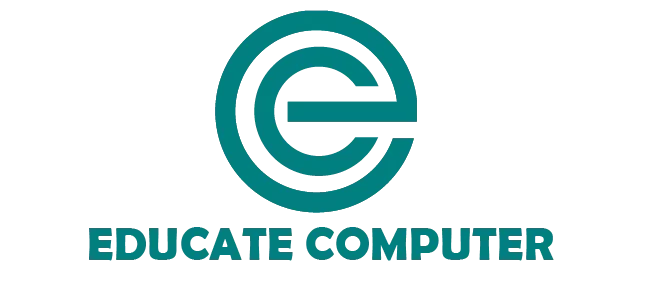Examples of mainframe computers include IBM z16, IBM z15, UNIVAC I, Fujitsu GS21, Hitachi VOS3, and Amdahl 470.
Mainframe computers are powerful machines. They handle large amounts of data quickly. Banks, governments, and big companies use them. Also, read Uses of Mainframe Computer to know about its uses in real life.
What are Examples of Mainframe Computers?
The following are 10 examples of mainframe computers:
1. IBM z16 – The Most Advanced Mainframe
IBM z16 is a mainframe computer example. It is the most advanced mainframe computer in the world right now. It was released in 2022 and is packed with artificial intelligence (AI) technology.
Key Features:
- Uses AI to detect banking fraud instantly
- Has quantum-safe encryption, meaning hackers cannot break its security
- Processes 19 billion transactions per day without slowing down
Where IBM z16 mainframe computer is used:
- Big banks (for secure money transfers)
- Airlines (for booking and flight management)
- Government agencies (for national security data)
2. IBM z15 – The Previous Flagship Model
Before the z16, IBM made the z15 in 2019. Many companies still use it because it works perfectly with cloud computing.
Key Features:
- Handles 1 trillion web transactions per day
- Automatically protects private customer data
- Can run thousands of virtual machines at once
Where IBM z15 mainframe computer is used:
- Online stores like Amazon (to manage millions of orders)
- Tax departments (to process citizen information)
- Weather forecasting (to analyze huge amounts of data)
3. UNIVAC I – The First Commercial Mainframe
The UNIVAC I was the first commercial mainframe ever sold. It was built in 1951. Unlike today’s computers, it used vacuum tubes instead of microchips.
Key Features:
- Used vacuum tubes instead of modern chips
- It was as big as a room.
- Processed the 1950 U.S. Census in half the time
Where It Was Used:
- Government census counting
- Early scientific research
- Television networks (for election predictions)
4. Fujitsu GS21 – Japan’s High-Speed Mainframe
Fujitsu GS21 is a powerful Japanese mainframe. It is 30% more energy-efficient than IBM models. This makes it cheaper to run.
Key Features:
- Uses 30% less electricity than other mainframes
- Can process stock market trades in microseconds
- Never crashes, even during heavy workloads
Where It Is Used:
- Tokyo Stock Exchange (for instant trading)
- Car manufacturing (to control robot assembly lines)
- Hospitals (for fast medical records access)
5. Hitachi VOS3 – A Reliable IBM Alternative
Hitachi makes mainframes that compete with IBM. Their VOS3 model is famous for being 99.999% reliable.
Key Features:
- Rarely stops working (less than 5 minutes of downtime per year)
- Works perfectly with IBM software
- Handles huge databases easily
Where It Is Used:
- Hospitals (to store patient records safely)
- Toyota and Honda (to manage car production)
- Air traffic control (to track flights worldwide)
6. Honeywell Bull DPS 7000 – Used in Space & Defense
This mainframe was built in the 1980s for mission-critical tasks where failure is not an option.
Key Features:
- Survives extreme temperatures and shocks
- Used in space missions
- Processes data in real-time
Where It Was Used:
- NASA (for space shuttle missions)
- Military (for missile defense systems)
- Nuclear power plants (for safety monitoring)
7. Amdahl 470 – The Budget-Friendly IBM Clone
In the 1970s, IBM mainframes were too expensive for many companies. Amdahl made a cheaper version that worked the same way.
Key Features:
- Costs half the price of IBM models
- Ran all IBM software perfectly
- It was smaller and used less power
Where It Was Used:
- Universities (for scientific research)
- Early online shopping systems
- Insurance companies (for policy calculations)
8. NEC ACOS – Built for Telecom Networks
NEC is another top Japanese tech company. Their ACOS mainframe is built for telecommunications and 5G networks.
Key Features:
- Handles millions of phone calls and internet connections
- Processes data at lightning speed
- Never drops connections
Where It Is Used:
- NTT Docomo (Japan’s biggest mobile network)
- Internet service providers
- Smart city traffic control systems
9. HP NonStop – The Mainframe That Never Crashes
HP NonStop is designed for zero downtime. This means it never stops working, even during failures.
Key Features:
- Keeps running even if parts fail
- Used in emergency services
- Processes credit card payments instantly
Where It Is Used:
- 911 emergency call centers
- Stock exchanges (like NASDAQ)
- Hospitals (for life-support system monitoring)
10. CDC 6600 – The 1960s Supercomputer
CDC 6600 was the fastest computer in the world in 1964. It was three times faster than IBM computers at that time.
Key Features:
- It was three times faster than IBM computers at the time
- Used for complex physics calculations
- Helped design nuclear reactors
Where It Was Used:
- Scientific labs (for physics research)
- Military (for weapons testing simulations)
- Weather prediction centers
